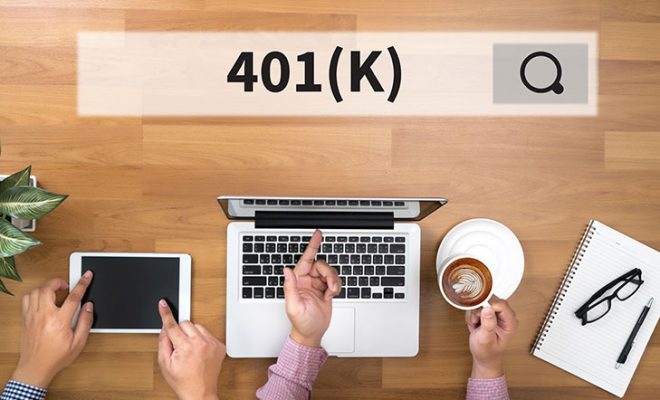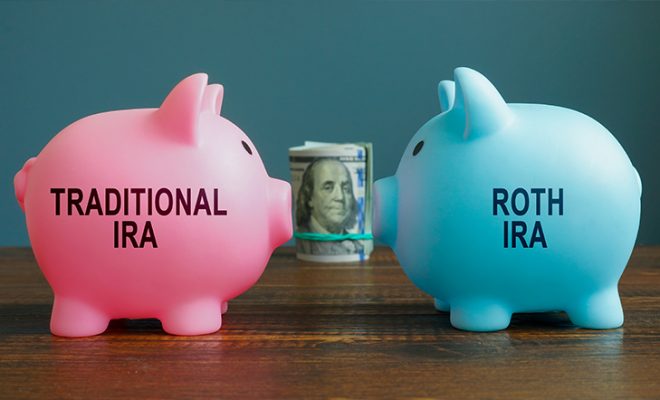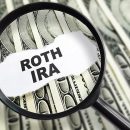High-Net-Worth Retirement Planning Checklist

Everyone worries about their retirement, and high-net-worth individuals are not immune to this. While it may be slightly easier for high-net-worth individuals to accumulate a substantial retirement corpus, it remains a significant concern for them because of their high expenses, expected future inflation, diversified assets, large estate concerns, complicated tax structures, and more. The struggles of retirement planning are not just limited to low or medium-income earners. Instead, even the high-net-worth individuals are worried about their retirement security and sustainability. According to a 2018 study titled ‘U.S. Trust Insights on Wealth and Worth, a majority of high net worth individuals do not have a retirement plan. The study also highlighted that even the people who had a retirement plan were yet to take advantage of it. The concerns about their retirement security were evident even amongst people of this income group.
Typically, a high-net-worth individual is someone with more than $1 million or more in investible or liquid assets, exclusive of home equity. A very high-net-worth person can have $5 million or $10 million in assets. In addition, an ultra-high-net-worth person is someone who has at least $50 million or a minimum of $100 million in investible assets. While the precise definition differs, the crux is that high-net-worth individuals have substantial assets. It might appear that this category of income earners would not be worried about their retirement. However, retirement planning can be challenging for everyone, considering the complexities involved. Further, several uncertain events in the future can erode the retirement corpus significantly. According to a survey, 90% of retired and working people between 50 and 70 years reported that an economic or life event created a negative financial impact on their retirement savings goals.
Overall, effective retirement planning for high net-worth individuals is critical to secure their future and maintain the same standard of living. Moreover, effective retirement planning is helpful if you want to pass on your estate and assets to your heirs with a minimum tax burden. Proactive retirement planning can help you enhance your ability to live a comfortable retirement and fulfill retirement desires, such as traveling the world, visiting your kids abroad, remodeling your home, and more. To understand how you can build a substantial retirement nest egg and fund your future retirement goals and dreams, consult with a professional financial advisor who can advise you on the same.
Here is a useful retirement planning checklist for high-net-worth individuals that you can use to secure your golden years:
1. Determine your unique needs
First, you have to ascertain your retirement needs. Each individual has a different retirement goal. Some people want to maintain the same standard of living, while others are willing to relocate to a tax-friendly state or downsize their retirement expenses to ensure their retirement savings do not fall short. Some retirees want to travel the world; others consider opening their business, and more. Different people have different retirement dreams. Your retirement plan depends on your unique retirement goals. There is no such thing as a standard retirement plan as everyone’s goals are different. However, it is beneficial to follow proper steps when saving for retirement. If you want to set up your business or travel the world, you might need a substantially higher retirement corpus than someone who wants to spend their retirement years living close to their family. Depending on the type of retirement life you want to live, you can decide on a goal and align your savings with it.
2. Know your sources of retirement income
This step of the high net-worth retirement planning checklist involves determining what you have. This means you take account of all your retirement income sources and assess the amount of money you have in each one. Start from your regular bank account, money market accounts, or any cash deposits you hold. Once you know the balance for each of these accounts, check your retirement savings accounts, such as your 401(k), IRA (Individual Retirement Account), Roth IRA, or Roth 401(k). If you have a supplementary tax-advantaged savings account like an HSA (Health Savings Account), add its balance to your retirement corpus. Alternatively, if you have investments in less popular retirement accounts like a SEPP, SIMPLE, Defined Benefit, etc., include their balances in your retirement sum along with projected Social Security benefits. Your Social Security benefits will vary according to your age at the time of withdrawal. While legally you can withdraw Social Security funds at the age of 62, delaying Social Security withdrawals until 70 can allow you to increase the payout by 32% more than if you started withdrawing at your full retirement age. Beyond 70, there is no increment in Social Security balance. If you start taking Social Security drawings at 62, you can experience a 29.17% reduction than your full retirement age payout. That said, after accumulating the balance of all the retirement accounts, estimate the net value of your business. Post this, include your high-value investments such as real estate net worth or rental properties, stock holdings, artwork, vintage cars, boats, etc. If you have a pension plan, life insurance policy, or annuity plan, incorporate the income details to arrive at your accumulated retirement nest egg.
3. Assess your debt
Not all debts are good, especially if you are paying high interest on them. The objective is to narrow down your debts by eliminating the large or high-interest paying debts. As a high-net-worth individual, you could owe money on your car, boat, yacht, or any other specialty vehicle. Consider eliminating these debts as they could become a major expense to pay during the non-working years of your life. If you have any home loan, business debt, or other personal debt, aim to pay them off at least before you quit working. Alternatively, if you have any specific medical drug costs, take those into account when ascertaining your retirement expenses. Further, if you owe any money to your spouse after divorce or you have pending child support payments, add them to the list of expenses you will take on even during retirement. You can work towards an engagement with your spouse and check if they agree to get the divorce settlement payment in a lump sum, thereby relieving you from giving prolonged payments much into the future.
4. Determine your living expenses
The next step is to create a retirement expenses checklist. Estimating your living expenses can be challenging as you might have clarity on what you would likely spend in the next ten years, but you essentially have no control over any alterations that may occur over time and end up changing those plans. Sometimes you would be able to maintain the lifestyle you hoped for, and in other cases, people might be financially capable of sustaining the same living standard in their non-working years. Hence, it is important for you to understand how you want to spend your golden years. If you want to travel in your retired years, know where you want to travel – domestic, international, weekend trips, month-long vacations, world tours, or more. Alternatively, if you have philanthropic plans or you want to give back to society, adapt your retirement expense list accordingly. You might want to establish a charitable foundation. Estimate how much you would be giving every year and accommodate that in your living expense estimation. You could have other retirement aspirations, such as hosting social gatherings, parties, etc., all of which can run pretty high in expense. If you think you would be living a retirement life that involves hosting heavy expense parties, you would need to bloat your retirement living expenses accordingly. That said, remodeling your house, investing in real estate, financially helping your kids and grandkids, etc., will all add up to your retirement living expense sum. If you want to leave assets for your heirs, estimate how much you want to leave for them. This number will become a fixed reservation in your retirement planning, and you would ideally ensure that you do not consume this portion of your estate when living. Planning well for retirement living expenses ensures that you can lead a physically, mentally, and socially active life. Once you know how much you have, how much you owe, and how much you need for the future, it is time to understand what you can do to financially secure your golden years.
SPONSORED WISERADVISOR
5. Maximize your retirement account contributions
The best way to create a retirement corpus is by maximizing your retirement account contributions. These accounts offer tax advantages in the present and future, allowing you to accumulate a large sum for the future. If you contribute to a 401(k) plan, aim to maximize your contributions each year. In 2022, you can contribute up to $20,500 if you are less than 50 years of age. If you are above 50, you can contribute up to $27,000. Know your contribution limit for each year, and focus on maximizing them. Alternatively, take the employer contribution match if your employer makes a matching contribution to your 401(k). Employer contributions are essentially free money. If your employer gives you access to a Roth 401(k), you can estimate if you will be in a higher tax bracket in the future or present. If you think you would be paying higher taxes in retirement, keep contributing to a 401(k). Alternatively, if you think you will owe higher taxes in the present and much lower in the future, choose to invest in a Roth 401(k). In addition, if you meet the income eligibility limits, consider maximizing contributions to an IRA and Roth IRA that you can open with an authorized custodian like banks, trust companies, brokerage firms, federally insured credit unions, etc. In 2022, you can contribute up to $6,000 if you are 50 or younger. If you are above 50, you can contribute up to $7,000. This limit is a collective ceiling for all IRAs in your name.
6. Create a tax-optimized withdrawal strategy
It is important to create a tax-optimized withdrawal strategy so that you pay less in taxes and instead save more. In general, retirement account withdrawals like a 401(k) are taxed at your ordinary income tax rate. Your short-term capital gains are also taxed accordingly, while long-term capital gains have a different tax rate, which is generally lower than the income slab rate. You can take withdrawals from your 401(k) after the age of 59.5, but if you take drawings before that, the IRS (Internal Revenue Service) will levy a 10% penalty. In the case of a Roth IRA or a Roth 401(k), you can take tax-free withdrawals but are subject to some conditions. Hence, as a wise high net-worth retirement planner, aim to understand the withdrawal rules of your retirement accounts and accordingly create a tax-optimized drawdown strategy. If you invest in 529 plans, life insurance, and HSAs, you can take free withdrawals provided you use the money from these accounts to pay for specific expenses they are directed for, such as HSA for medical costs, 529 plans for children’s education fees, etc.
7. Invest in the right insurance and long-term care
An important element of a high net-worth retirement planning checklist is to assess if you have the right insurance plan. This can include life insurance policy, health insurance, etc. Moreover, do not forget to invest in a good long-term care policy because several studies show that most retirees will require a long-term care plan in their future, especially if they have an underlying health issue, such as diabetes, etc. Take stock of your insurance needs and identify the gaps by matching your needs with your insurance plans. If you need to invest in higher coverage insurance plans, take action as soon as possible. There is no better time than now to plan for your retirement.
8. Create an infallible estate plan
A critical component of a high-net-worth retirement planning checklist is an estate plan.Estate planning will allow you to govern how your assets are conserved, managed, and distributed in your absence, such as death or mental or physical incapacitation. The objective of creating a foolproof estate plan is to ensure your assets are in your control while you live and are effectively passed on to your beneficiaries after you are gone. Estate planning involves multiple aspects, such as taking stock of assets, determining their market value, creating a will, distributing the assets between your heirs, updating your retirement account beneficiary details, creating a charitable organization, giving lifetime gifts, assigning a power of attorney, and more.
To summarize
Retirement planning for high net-worth individuals can get slightly complicated because of the complex tax structure, high estate values, multiple distributed assets, uncontrolled expenses, and more. If the thought of creating the ideal retirement plan overwhelms you, you can consult a professional financial advisor who has the expertise and experience to help you create a fail-safe retirement plan.
To get in touch with a fiduciary advisor who can help you grow and manage your finances effectively for your unique retirement needs, use the free advisor match service. Answer a few simple questions about yourself and the match tool will help connect you to 1-3 financial advisors based on your financial requirements.
To learn more on how you can grow and manage your retirement funds through a strategic retirement plan, visit Dash Investments or email me directly at dash@dashinvestments.com.
About Dash Investments
Dash Investments is privately owned by Jonathan Dash and is an independent investment advisory firm, managing private client accounts for individuals and families across America. As a Registered Investment Advisor (RIA) firm with the SEC, they are fiduciaries who put clients’ interests ahead of everything else.
Dash Investments offers a full range of investment advisory and financial services, which are tailored to each client’s unique needs providing institutional-caliber money management services that are based upon a solid, proven research approach. In addition, each client receives comprehensive financial planning to ensure they are moving toward their financial goals.
CEO & Chief Investment Officer Jonathan Dash has been profiled by The Wall Street Journal, Barron’s, and CNBC as a leader in the investment industry with a track record of creating value for his firm’s clients.











